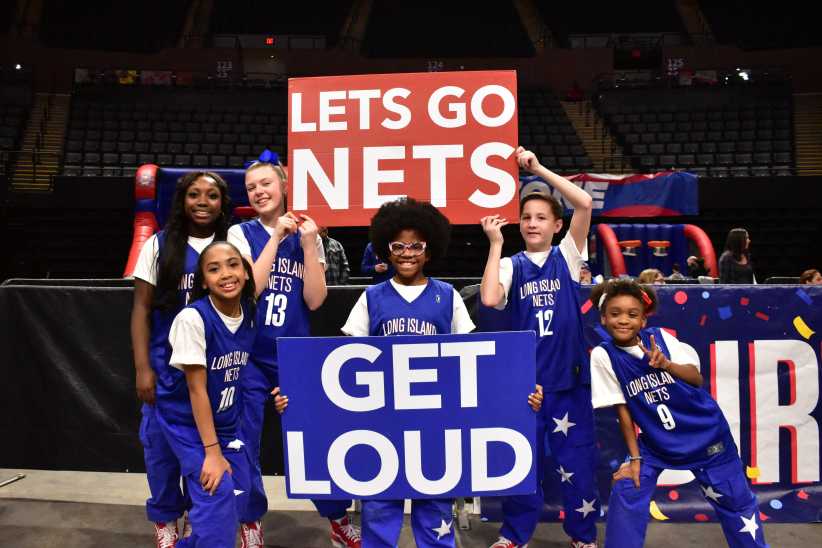Politicians running for political office and editorial writers looking for an emotional issue have been busily telling us why Queens youngsters are not doing as well in school as they should.
The charts and graphs show a too-high student failure rate in reading comprehension and mathematics, high teacher turnover, student violence, with little or no mention of their triumphs.
Most of these critics have not bothered to read the 1999 report "Keeping Track of New York City’s Children" that was recently issued by the Citizens Committee For Children. The comprehensive 216-page report pin-points a multitude of child related issues, ranging from education to economics. The report also closely examines such wide-ranging topics as student health programs, playgrounds, and eligibility for free school lunches…accompanied by a meticulous neighborhood-by-neighborhood analysis.
Critics aside, Queens parents and educational advocates get a better understanding of our youngsters’ limiting educational structures, for example, when they examine some of the root causes of the following:
• Nearly 32 thousand Queens elementary and middle school youngsters are designated as having Limited English Proficiency.
• The entire public school system in Queens is operating at a 110 percent capacity while the rest of the schools are operating at less than 97 percent.
• Four times as many schoolchildren in Astoria and L.I. City receive free lunches than the kids in Bayside and Little Neck.
• The schools in Sunnyside and Jackson Heights have five times the number of immigrant students than in all of Staten Island, while Flushing only has three times that number.
Thus a quiet reading of the Keep Track report helps put elementary and middle school education in a more proper perspective. Their charts and graphs allow Queens parents and civic activists to quickly compare all of the child-oriented facilities and programs within their respective communities with those in the rest of Queens, as well as with New York City.
Equally important, it also helps them understand why it is easier for elected officials to demand "educational accountability" from their educators than it is to launch vigorous programs that would clean up, refurbish or expand Queens’ 202 overcrowded elementary and middle school system.
Finally, they will also learn that many diverse aspects of a child’s well-being are interrelated:
• That is sound educational policy for 62 percent of Queens students to receive free school lunches.
• There is a strong difficulty of 31 percent of Queens youngsters to do their home assignments properly, because they live in overcrowded rental housing.
• Each year, well over 2,000 Queens households faced a combined fiscal, health, and educational crisis when a family teenager gives birth to a child. Another 1,900 local households are shattered when a juvenile child is arrested for a felony.
• And, left unanswered, is why Queens, with nearly twice as many 18-and-under youngsters than in Manhattan, still has less pediatric and mental health centers then the smaller borough.
Population And Facility Logistics
Queens kids need space to play and grow intellectually, but adequate space in Queens is becoming harder to find. The glaring lack of adequate facilities for Queens youngsters place them in danger of being spaced out.
Recreational property in Queens that was taken for granted is being subtly slipped away by the city fathers:
• For nearly a decade, the recently completed U.S. Tennis Center and the hotly proposed new cantilevered stadium for the N.Y. Mets have both been earmarked for construction on Parks Department property. In effect, Mayor Giuliani is trying to do for the Mets, what Mayor Dinkins did for the tennis center in the early 90’s.
• The recently-abandoned HOV lane on the Long Island Exp., in Douglaston, was slated to engulf a section of the environmentally-sensitive Alley Pond Park.
• And, when the U.S. Government turned over the idyllic Fort Totten parklands to New York City, the first announcement from the Mayor’s office was the assignment of a chunk of park property to the Fire Department for a training center.
These encroachments become increasingly critical with the knowledge that one of every four New Yorkers under the age of 18 lives in Queens, and the birthrate for Queens mothers average a healthy 30 thousand babies every year.
Spacewise, some Queens kids are beginning to look over their collective shoulders, because there are over 12,500 Elmhurst and Corona youngsters crowded into each square mile of CB 4. Almost as bad, nearly 11 thousand youngsters per square mile are milling about in the CB 3’s Jackson Heights, as well. Parental concerns in these districts is understandable, since the rest of the borough averages about 4,400 youngsters per square mile.
Similarly, youngsters in Woodhaven (CB 9) and Elmhurst/Corona (CB 4) are being shortchanged because of limited park space in their communities. Both communities have three times more children per park acre than the borough average of 711. Currently, there are no new parks scheduled to be opened on these community boards.
Recreation also takes a body blow for Queens’ 430,000 youngsters. The report reveals that Manhattan has four times the number of swimming pools than Queens (17 vs, 4), even though this borough has a one-third greater school age population. Not to be outdone, Queens also has less swimming facilities than Brooklyn and the Bronx. Remaining consistent, Manhattan also has four times more public recreation centers than Queens (12 vs. 3).
Playgrounds are an important adjunct for youthful after-school activities. Community youth activists in Woodhaven (CB 9) and Jackson Heights (CB 3) who wonder why their youngsters don’t participate in recreational athletics more readily, would be shocked to learn that these two districts have the least number of playgrounds in the borough (5 each). Astoria (CB 1) and Flushing (CB 7) have three times more playgrounds in their communities, according to the report.
But even more shocking is evidence that high population is no determinant as to whether a playground will be constructed in a community. Keeping Track readily reveals that community boards in other boroughs, with the same youth population as Queens boards, often have twice as many playgrounds. For example, CB 1, in Staten Island, with the same population as Queens CB 3 and CB 9, has three times the number of playgrounds.
Space to grow intellectually is also limited in some sections of Queens, according to Keeping Track. Youngsters’ ability to gather information hinge on their familiarity with a library’s research program. According to educators, districts with inadequate or hard-to-reach libraries do their young students a disservice.
The report reveals that although one-third of New York City’s public library branches are located in Queens, both Elmhurst/Corona (CB 4) and Woodhaven (CB 9) have only two branches each. Significantly, both communities have a large number of students with limited English proficiency (LEP), an educational standard that determines how well a child reads and speaks English.
To their collective credit, Queens library authorities have traditionally helped foster their services for young readers. However, local school principals, are cramped for space in the borough’s 202 elementary and middle schools. Principals and teachers, operating at 110 percent capacity, often find it difficult to provide adequate facilities to teach youngsters how to use a library for research.
Last year, The Courier reported that some students were consigned to hallways, alcoves, and basement sites until the modules, under construction, were completed.
Queens Schools
One of every four New York City school children goes to a public school in Queens as the result of the borough’s soaring 23 percent enrollment hike since 1990.
During 1997, this heavy increase was fueled by the more than 22,700 immigrant students who are attending Queens elementary and middle schools.
Hardest hit in New York City by the heavy influx of foreign-born students was SD 24 ( Sunnyside, Woodside, Jackson Heights), which registered nearly five times as many immigrant students as the entire borough of Staten Island. All told, more than 12 percent of the borough’s students are foreign born…the highest rate in the city.
This partially explains why the report shows that grade level reading and math scores have sagged between 1990 and 1997. It also fully explains why the number of students categorized as having a "Limited English Proficiency," leaped dramatically in Queens by more than 42 percent during this eight-year period. Despite the low reading marks scored by students in SD’s 24 and 27, borough schools generally did better than the city-wide average.
The city-wide high reading and math scores in SD’s 25 and 26 are, in good part, reflected by the high percentage of their fully licensed/permanent staff of teachers. Significantly, the report reveals that the lower number of licensed educators in the school, the lower the reading and math scores of their students.
Highlighting the importance of trained professional teachers, these higher average scores were attained by Queens pupils despite the fact that the average classroom size of Queens’ schools were greater than the city average. In effect, the report said that having a trained teacher in the classroom, outweighed the negative impact of a larger student body.
Despite the positive finding, the report noted that the Board of Education’s elementary and middle schools in New York City, were operating at a 97.6 percent capacity rate. At the same time, Queens schools were operating at a painful 110 percent capacity rate. Moreover, while fingers were being pointed at SD 24’s low reading scores, it was stumbling along at a 126.6 percent capacity rate… the highest in the city’s school system.
































